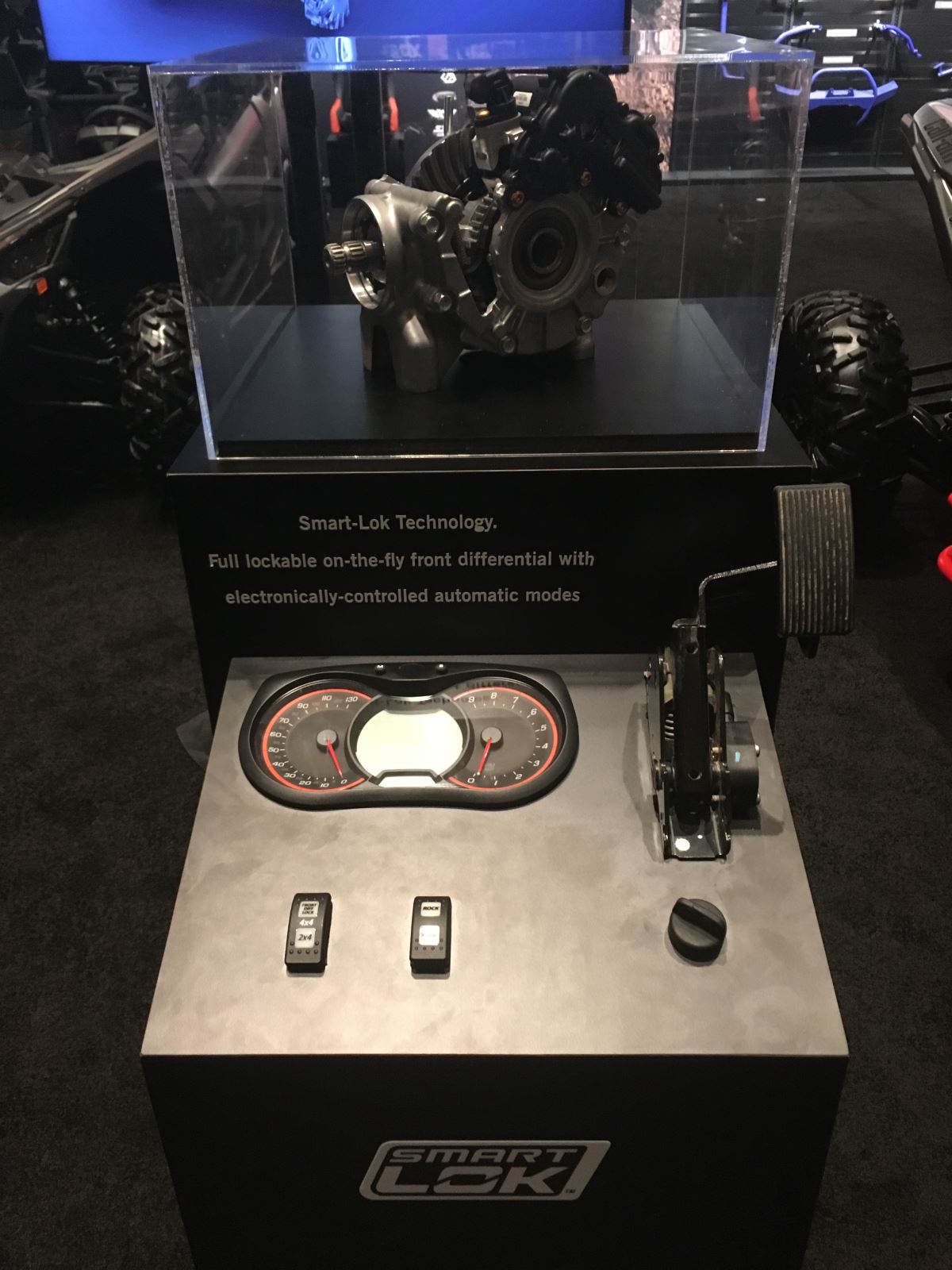DT: Explain the differences between the two systems and why Smart-Lok more advantages.
Dumas: As mention previously, the Smart-Lok is on its own, it’s a different system and is not replacing the Visco-Lok. It’s an additional feature to the BRP Can-Am off-road lineup. There are some applications where we know the Visco-Lok is not optimal. The Smart-Lok has a higher torque transfer capacity and it can maintain that torque for a longer period of time with the electronic control. To enter the rock-crawling market, we needed that type of technology. It’s also a major addition to our mud (X mr family) vehicles.
A good point for Smart-Lok is this. It’s the same half-shaft left and right side, unlike Visco-Lok where there was a short one and a long one. Racers will be happy with that.
The Visco-Lok is still a good all-around unit for most of the riders out there. And it is easy to use, as soon as you are in 4x4, the Visco-Lok will react to events, helping the vehicle to go over some obstacles.
DT: With Smart-Lok, what vehicle components are involved in making it work? Explain how each of those six components is involved.
Dumas: The Smart-Lok computer (FDM) takes the information on six key parameters: front wheel speed, vehicle speed, gear position, accelerator pedal position, engine torque and steering angle position. These parameters give the FDM the information needed to decide if it’s the time to engage the clutch and how much pressure it must apply. This new system also required new driveline switches to control the different modes. The half-shafts are also new with Smart-Lok and 45 percent stronger.

DT: When Can-Am says you can change "on the fly," is it really on the fly or do you have to stop the vehicle or be going a specified speed, etc.
Dumas: It is really on the fly because you can either switch Smart-Lok settings (i.e. from TRAIL mode to ROCK mode for example), but also you can lock and unlock the front differential while you are riding. The Smart-Lok design allows riders to change the automatic mode and the differential state for an upcoming obstacle. There is no synchronization required on this type of front differential.
DT: Explain how, when in diff lock, most vehicles' steering is stiff but Can-Am claims Smart-Lok makes steering "simple."
Dumas: In Front Diff Lock mode, the steering will be as “hard” as any other locker. The edge Can-Am has is with the specific mode related to package, especially ROCK mode. This mode will give as much traction as the lock state (or close to it), but it modulates the clutch clamping based on the engine torque and accelerator pedal position. So, after an obstacle, as soon as you start to reduce your engine torque requirement, the clutch will start to release simultaneously, reducing at the same time the steering effort. That makes a big difference when you have to do maneuvers to pick the right lane to cross the obstacle.

